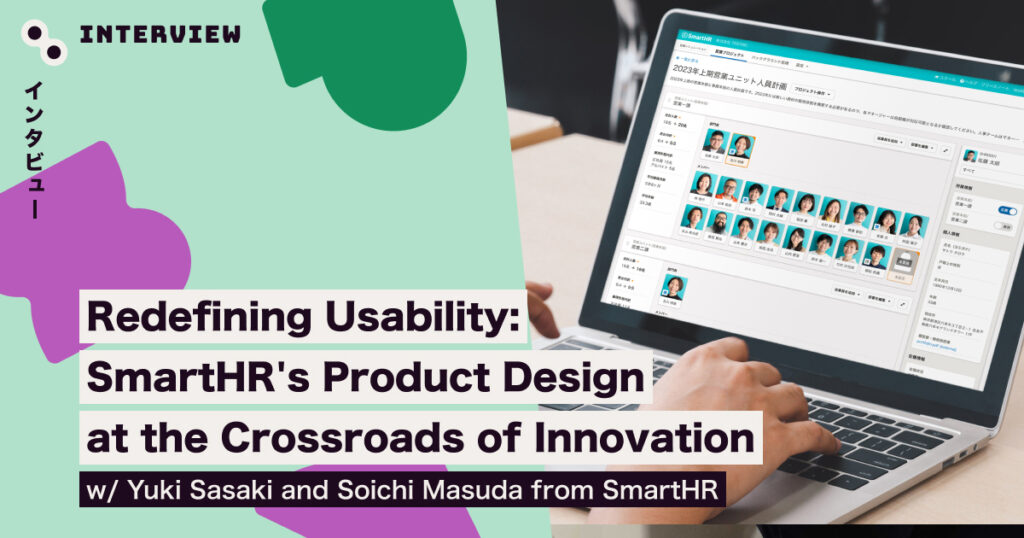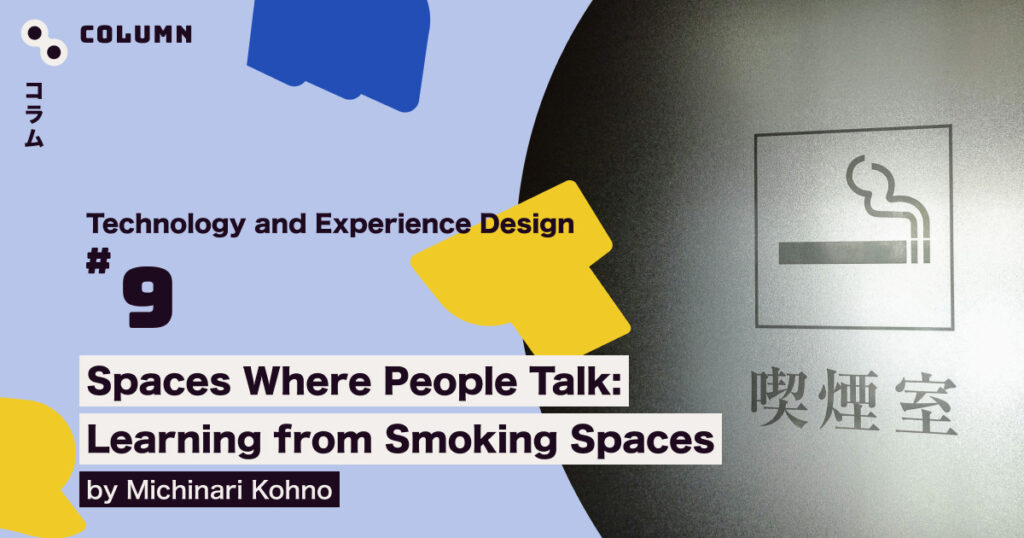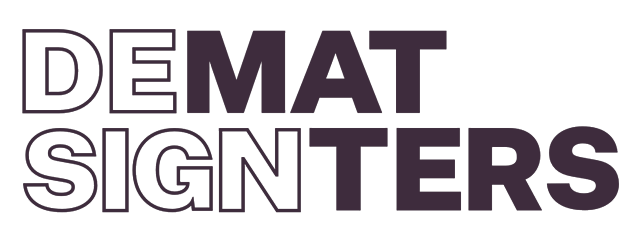How Lookmee Supports Childcare Facilities in Japan
Childcare facilities such as nurseries and kindergartens serve as a social infrastructure for people who balance work and raising children. However, a long-standing challenge in these childcare settings is the shortage of qualified personnel. How does Lookmee, a provider of comprehensive ICT services for childcare facilities, approach this issue?

Hiroaki Akanuma | CTO
Hiroaki joined Unifa Tokyo Office at its establishment in 2015, he oversees the entire product development department responsible for system development.
Takahiro Yamaguchi | Head of Product Management Dept., Product Development Dept.
Takahiro joined Unifa in 2020, inspired by the birth of his child. He is a certified Human-Centered Design specialist and a member of the evaluation committee.
Kohei Morita | Acting Head of Design Dept., Product Development Dept.
Kohei joined Unifa in 2018. Currently serving as the design department manager, he oversees the design aspects of products, promotions, and corporate branding.
Realizing “difficulty” in childcare through observation and experience
── First, please tell us about the Lookmee.
Takahiro: Lookmee is a comprehensive ICT service for childcare facilities that aims to create a rich environment for children and support the improvement and assurance of childcare quality. We offer 14 products, including the Lookmee Renrakucho (communication book) and the Lookmee Otayori (letter), which cover everything needed from when a child arrives at the facility until they return home. Through these products, we aim to reduce the workload of teachers and create more time for them to engage with the children.
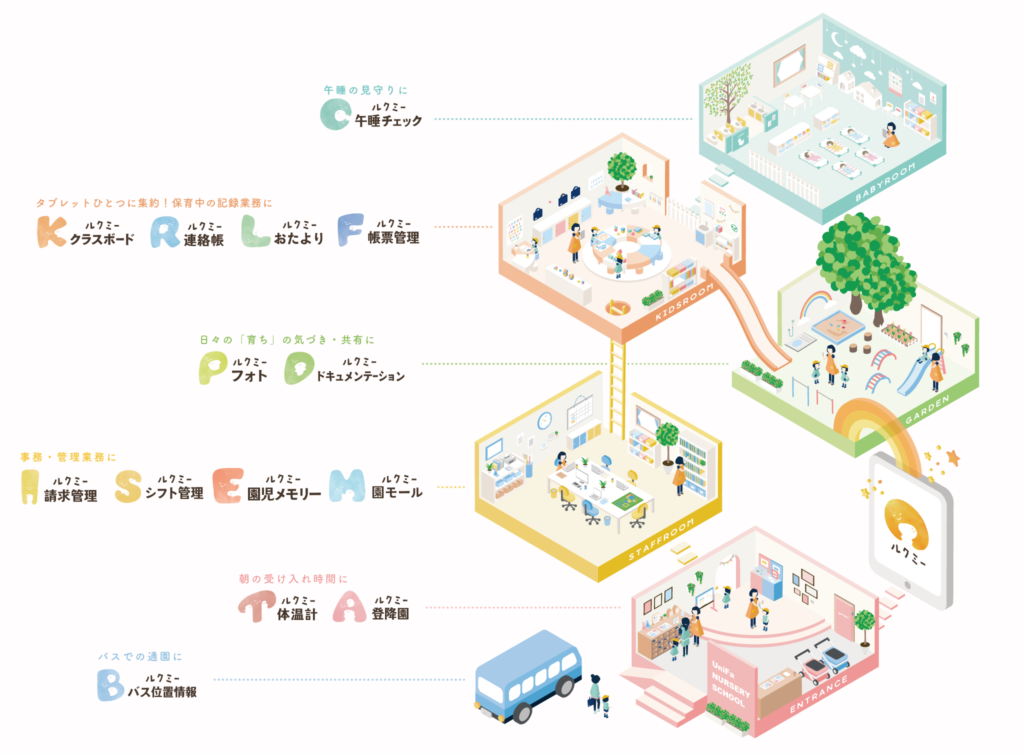
── For developers, it may be challenging to gain insights into the issues faced in childcare settings. How do you gather information?
Takahiro: We have team members who hold licenses as childcare workers or kindergarten teachers, as well as those who have children attending childcare facilities. We not only consider their opinions but also conduct interviews with childcare providers working in the field and even participate in practical experiences at childcare facilities.
One particularly striking realization we had was the “unexpectedly hectic morning time.” While the specific methods vary among facilities, in the morning, they need to confirm if each child has arrived, place orders for meals based on the number of children, check if the staffing meets the required ratio for each age group, and adjust shifts if necessary… There are truly numerous tasks that must be done. What we may have thought as “We can handle it by displaying data on two browsers” is not a feasible solution in the eyes of those working in the field. Through grasping these differences in perception, we gained various insights.
── After releasing the first product, Lookmee Photo, in 2013, you announced Lookmee Gosui Check (nap check) in 2017. The nap check has become a killer product for Lookmee, but what was the background behind its creation?
Hiroaki: The midday nap at childcare facilities ensures children’s rest while at childcare. We realized the tasks during nap time could be less stressful when we participated and experienced childcare. Conversely, this idea did not come from interviews with childcare providers since it had become such a “normal” task for them during nap time.
When we personally experienced the work of childcare providers, we felt that technology could support and make workload less for providers; which led to the creation of Lookmee Gosui Check. Typically, teachers manually check each child every five minutes during nap time to prevent any accidents and write the arrow to show which side the child is facing. This task is practically mandatory as it is also involved in audits. There was a physical burden of performing handwritten tasks in a dark room, as well as a psychological burden of monitoring the safety of children’s lives. It would alleviate the mental burden on teachers if a nap check could function as a double-check. We believed that introducing Lookmee Gosui Check would not only contribute to efficiency but also provide value in terms of reducing the psychological load.
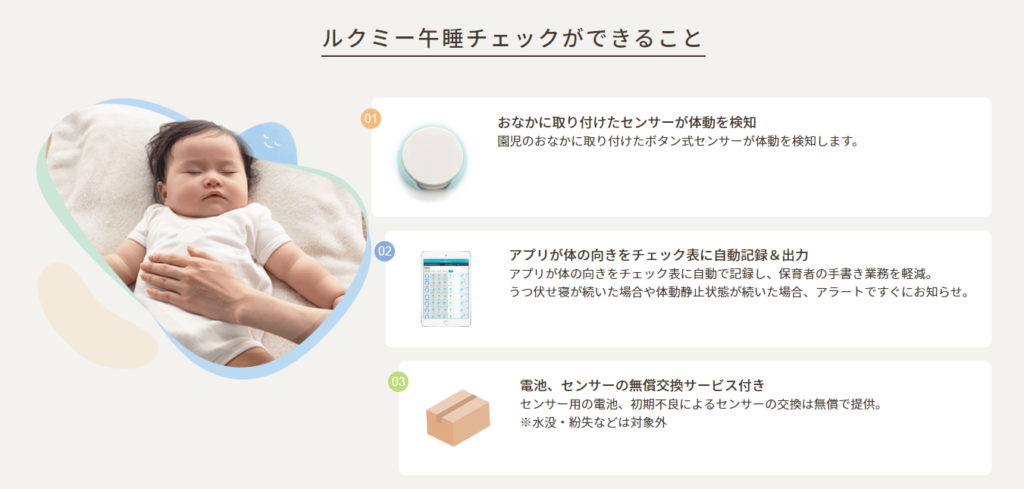
── Are there any specific considerations you keep in mind when designing the product?
Kohei: In the past, there were many instances where the UI and layout we designed based on our previous design experience did not resonate with the childcare providers in the field. When something they were accustomed to suddenly changed 180 degrees, they found it difficult to adapt.
We started to consciously consider design in a way that allows child care providers to maintain what they have learned and built upon while moving forward to the next step. What was important here was not just replacing analog with digital but rather whether it would be easier for them to accept if they had already been exposed to other digital tools from different companies. It turned out to be different from our initial assumptions, but we adjusted while listening to the feedback from the field.
Achieve ICT implementation tailored to the reality of childcare facilities
── After Lookmee Gosui Check, you rapidly increased the number of products to the current 14. What was the reason for not consolidating them into one but instead separating and expanding them?
Takahiro: When considering the operations of childcare facilities, it didn’t make much sense to only digitize certain tasks. We needed to replace many aspects with a comprehensive solution. This meant that we also had to develop everything at once, and it was easier to handle if we divided them into smaller units. From the perspective of teachers, if everything was consolidated into one, it would be difficult to know where to start. So having them separated into smaller units made it easier to understand and get used to.
Another reason was that there were various tools used in childcare facilities, each with different specific purposes and operational rules.
For example, Lookmee Renrakucho (communication book) and Lookmee Otayori (letter) can be broadly categorized as “communication from the facility to parents.” However, their purposes are completely different. The communication book is used to individually notify how the child spent their day, while the letter is used for mass notifications such as “There will be a sports day next month.”
Additionally, there are rules for how they are sent. In the communication book, negative and specific incidents like “XX had a fight and got injured” are avoided as much as possible, and the focus is mainly on highlighting the child’s strengths and growth. This is a consideration for when parents review the communication book again in the future. In Lookmee, we provide the ability to handle individual notifications through DMs along with photos to address situations like injuries.

Takahiro: Taking these factors into consideration, we decided to separate the products. There were quite a few discussions within the company before making this decision, but looking back now, I think it was the right choice. When creating a product, we start with certain hypotheses, but sometimes those hypotheses may be off, or different needs may arise, leading to the addition or removal of features. Having them separated into smaller units makes it easier to make adjustments.
── I imagine there was a need to design a significant number of screens. How were you able to achieve this many designs while maintaining a sense of overall unity?
Kohei: When the Lookmee brand was established, we had already created a brand logo that would be able to accommodate a large number of products in the future. We had determined the font, color scheme, and tone for all 26 letters of the alphabet, and when launching a new product, we assigned a letter to it based on its function. For example, “Photo” starts with P, and “Taionkei (Thermometer)” starts with T. This allows us to maintain a sense of unity while designing the various products.
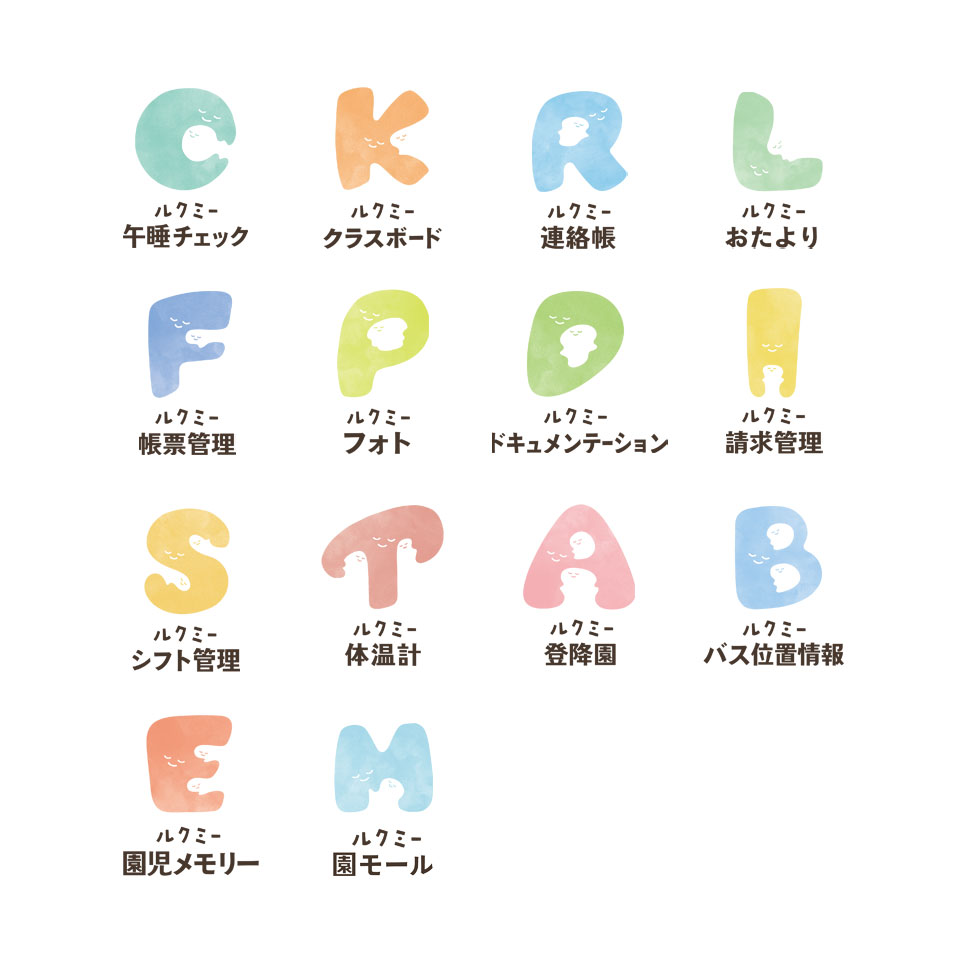
Kohei: We had already created most of the layout for the management screen, so when the number of products increased rapidly, we only needed to create a base format. Everything else was designed to be almost universally applicable, so we were able to handle the expansion without any issues.
Interestingly, during the discussions about whether to consolidate or separate the products, the design team had been preparing under the assumption of consolidation. But when we finished creating each screen, we suddenly heard, “It seems like we’re going to separate them after all” (laughs). So we had to quickly adapt, and these 26 brand logos were quite useful.
── Alongside the development of these products, you have also been promoting the concept of “Smart Nurseries, Kindergartens, and Childcare Facilities” utilizing AI and IoT technologies. Are product development and improvement carried out under a long-term roadmap?
Takahiro: In the past, we used to say things like “Let’s create a roadmap for the next three years,” but currently, we don’t have a roadmap as such. The circumstances and regulations surrounding childcare have been rapidly changing in recent years, and even if we could foresee something, it would ultimately change within six months, making it impossible to stick to a roadmap.
Especially significant are the aspects related to laws and subsidies. The subsidy systems related to ICT change every year, and with the establishment of the Children and Family Agency in April this year, we expect even more significant changes.
Hiroaki: Due to the impact of the COVID-19 pandemic, the decline in birth rates has progressed more rapidly than initially anticipated. This has increased the priority of addressing these issues within the government, leading to adjustments, and as a result, there has been increased activity among local governments as well.
Takahiro: Internally, there has been an increase in the sharing of documents related to these developments, and we adapt our approach based on the surrounding circumstances, including periodically reassessing priorities.
Connecting teachers and parents with appropriate distance
── Lookmee is a service used not only by teachers but also by parents of children. How do you perceive the roles of both parties in product development?
Takahiro: That’s right. For example, even with something as simple as a communication book, parents may prefer it to be able to make changes anytime, but teachers would like to avoid constant changes in content amidst their busy schedules. We are careful not to make the service too convenient for parents at the expense of increasing the burden on teachers.
There is a need to carefully assess whether the service truly works in practice and is not placing excessive burdens on teachers, while comparing the ideal with the reality.
It is also important for the childcare facility to have fair relationships with a large number of parents. In Lookmee, we encourage the documentation of children’s activities through photos, but the facility may be more concerned than the parents about ensuring that each child has at least five good photos. In other words, it is necessary to consider not only one-on-one communication with individual parents but also the overall perspective. Furthermore, it is important to consider the circumstances of various childcare facilities, not just one facility.

For the sake of children
── What kind of feedback have you received from childcare facilities that have implemented Lookmee?
Kohei: We have received a lot of feedback saying that “the quality of communication has changed.” In Lookmee, we allow text to be added to photos, so even just adding a caption like “They were eating with incredible enthusiasm” when conveying that the child finished all their lunch can lead to conversations like “He never eats this well at home!” or “Actually, they played a lot at the park and were excited to eat!” This ultimately helps teachers and parents “tell the story” of the child’s experiences. With the addition of documentation to the core element of photos, I think Lookmee has developed a unique brand compared to other companies.

Kohei: In addition to designing features based on the current state of childcare facilities, we want to further focus on what can be done to improve the quality of childcare and propose ways to streamline tasks, and suggest what can be done during free time. We believe that Lookmee exists precisely for that purpose.
── In addition to streamlining tasks, Lookmee aims to mix in proposals that enrich the future.
Hiroaki: The reason why Lookmee, which aims to “enrich family communication,” is focused on childcare ICT is because in a society where nuclear families are becoming more prevalent, it is difficult for families alone to achieve happiness, and childcare facilities play a significant role in that regard. By streamlining tasks and utilizing documentation, we can create a form where teachers and parents work together to support the growth of children. Ultimately, this can contribute to solving social issues.
Takahiro: If we only consider efficiency, one might think, “Why not automate everything with AI, including documentation?” However, I believe that the act of teachers writing about the child’s experiences while thinking about them includes the desire to convey information about the child and the valuable time spent thinking about the child.
We are not a group that simply wants to “digitize everything,” so we do not intend to push for ICT implementation at the expense of disregarding the importance of the desire to do things with one’s own hands. We want to continue refining our products while valuing the time and feelings of teachers and parents who think about the well-being of children and cherish the desire to do things themselves.
Related Links
Unifa inc.

